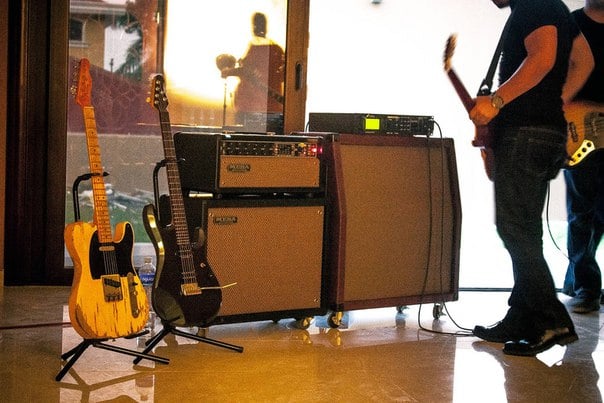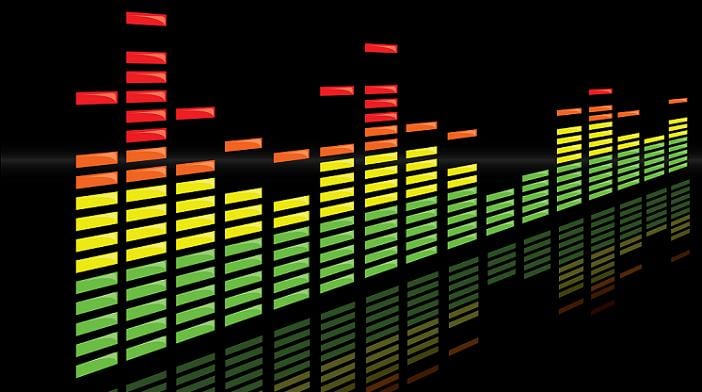 Image via forum.fractalaudio.com
Image via forum.fractalaudio.com
In the last five years or so, amp modeling technology has advanced tremendously. And as the units utilizing this technology are starting to become higher quality and more affordable, a lot of prolific musicians are jumping on board, switching out their current rig for portability and variability.
However, there's a lot of speculation and many misconceptions out there about the effectiveness of modeling rigs, and to someone who's debating exploring this technology, all of this misinformation can be confusing and discouraging. To make things easier for those curious to learn more, we thought we'd address some of the common arguments.
1. "The only decent-sounding multi-effects/amp modeling units worth having are way overpriced"
Price is always a concern when looking at a new setup, but while it's true that there are some high-fidelity modeling units that are more expensive, there are also several units that do an excellent job at a very reasonable price. Because budgets will vary from person to person, here is a sample list of the various products available:
- Fractal Audio Axe-FX II XL+ - $2,249.95
- Line 6 Helix - $1,499.99
- Kemper Profiling Amplifier - $1,800.00
- Rocktron Prophesy II - $1,299.00
- Roland GR-55 - $799.00
- Boss GT-100 - $499.00
- Zoom G5 - $299.00
- Boss ME-80 - $299.00
- Tech 21 Fly Rig 5 - $249.00
- Digitech RP500 - $199.95
The list goes on and on, but you probably get the idea. There are plenty of high-quality multi-effects/amp modeling options to fit any imaginable budget.
2. "No one worth mentioning actually uses this stuff live"
Actually, as the technology improves, more and more professional musicians are using these units for their live performances. Many of the companies' websites have a dedicated page that lists the artists using their products:
- http://www.fractalaudio.com/artists.php
- http://www.kemper-amps.com/page/render/lang/en/p/200/do/Artist_Gallery.html
- http://line6.com/artists/
- http://www.bossus.com/artists/boss_artists/
- http://www.tech21nyc.com/halloffame/index.html
Of course, companies like Boss and Tech21 produce a variety of products, but as you sift through these lists, you will find plenty of world-class artists using multi-effects/amp modeling products in their live rig. In fact, it's becoming more and more common for some bigger acts to have empty amp cabinets on the stage for the visual effect, when in reality their sound is coming entirely from rack gear or a floor unit. This allows musicians to be able to hear themselves exclusively through monitors instead of having to having to deal with the difficult amount of stage volume generated from several onstage amps.
3. "Those products are only useful for their presets. I want to be able to edit my sound in real time"
This certainly used to be the case for this particular type of audio technology, as manufacturers were struggling to find a user interface that allowed for on-the-fly editing of the various parameters and effects available. However, most of the products being made today are much more adjustable. Many of the floor units have a series of knobs and footswitches so that they can be used much like a traditional pedal board setup. In many cases, these units come with assignable controls, meaning that you can set certain parameters to be adjusted by an expression pedal or button, which actually adds more flexibility to these effects.
Many older vintage amps didn't have master volume control, so in order to drive the amp you had to really crank the volume. With the Kemper, for instance, you have the profiles for many of these vintage amps available to you, but with the flexibility of a master volume knob, which allows you to get amp-quality distortion at any volume.
4. "It just doesn't sound the same as using a real tube amplifier"
This is an endless debate amongst guitarists when it comes to digital solutions. Many people will argue that there is a certain "warmth" missing, the reactivity of the tubes, the feeling of the speakers moving real air. And in many ways it's true, as common sense tells us that you can't get a better simulation than the real thing. The key to getting these units to sound authentic is to spend time dialing in the sound you want. Don't just settle on the presets that come in the box. These settings are meant to work as approximations. If you really put the time into adjusting the settings to your personal preference, you'll eventually reach a sound that satisfies your ears, which is what's most important.
There will always be people who prefer real amps and analog gear. And that is their right, as they've found their preferred setup through years of trial and error. But while it's true that digital solutions may not be for everyone, you should never let anyone tell you that your approach to getting the sound you want is wrong. Whether you're using digital or analog technology, it's important to remember that an amplified electric guitar is a manufactured sound regardless of method, and that there's no such thing as any one "true" electric guitar tone. It's your responsibility and privilege to use any available means necessary to achieve the sound that you feel best expresses what you mean to accomplish with your music.
Next up:
- 3 of the Best Lightweight Guitar Amps You Can Get for $300 or Less
- How to Successfully Achieve Analog Warmth With Digital Tape Plugins
- 3 Kinds of Upgrades That Should Be on Every Gigging Musician's Horizon
- The Producer's Perspective: Why I Prefer Recording to Analog Tape
- 4 Smart Tips to Save Your Dying Music Gear
As a performing musician, John Tyler Kent has played with a wide variety of artists for all kinds of audiences, from small clubs across the country to international music festivals. In addition to his work as a performer, Tyler has working experience in marketing, production, and composition.







